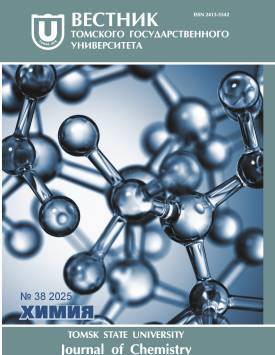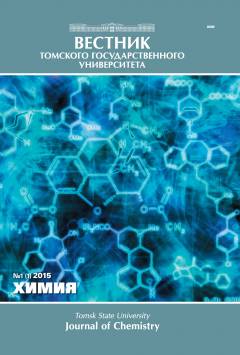Carbon materials for electrochemical energy storage devices. Studies of structure by x-ray diffraction
In this paper it is discussed X-ray diffraction patterns of carbon materials that are promising for use as components of electrodes in electrochemical energy storage devices such as supercapacitors, lithium-ion and post- lithium-ion batteries: graphites, graphenes, carbon nanofibers, nanotubes and carbon blacks. Based on the X-ray diffraction patterns, the following characteristics of carbons were calculated: interplanar distance, crystallite sizes, the number of aromatic layers and carbon atoms in crystallites, the content of the amorphous phase and the crystallographic density. In the studied graphites, the proportion of the amorphous phase varies in the range of 0.5-10%, the interplanar distance is 3.35 A. The proportion of the amorphous phase in carbon nanofibers is 10-15%, and the interplanar distance is 3.40 A. For the studied carbon nanotubes, the interplanar distance was 3.45-3.48 A, and the proportion of the amorphous phase was 40-60%. The interplanar distance in carbon blacks varies in the range of 3.5-3.7 A, and the proportion of the amorphous phase reaches 70%. The structure of all the studied carbon materials contains highly crystalline and low crystalline phases, as well as an amorphous phase. In the X-ray patterns of nanofibers, nanotubes and carbon blacks, a shift and broadening of the (002) bands is observed compared to graphite. This shift indicates an increase in the defectiveness of the crystal lattice. The calculated crystallographic density of the studied samples of allotropic forms of carbon is 2.28 g/cm3 for graphites, 2.22 g/cm3 for carbon nanofibers, 2.19-2.20 g/cm3 for carbon nanotubes, and 1.96-2.20 g/cm3 for carbon black. Thus, based on the conducted studies, it can be concluded that the smallest amount of amorphous phase is observed in graphites, and the largest - in carbon blacks. Graphites have the smallest interplanar distance, and carbon blacks - the largest. Contribution of the authors: the authors contributed equally to this article. The authors declare no conflicts of interests.
Keywords
X-ray phase analysis, graphite, nanotubes, nanofibers, carbon blackAuthors
| Name | Organization | |
| Kuzmina Elena V. | Ufa Institute of Chemistry, Ufa Federal Research Center of the Russian Academy of Sciences | kuzmina@anrb.ru |
| Gaifullina Elvina R. | Ufa Institute of Chemistry, Ufa Federal Research Center of the Russian Academy of Sciences; Bashkir State Pedagogical University named after M. Akmulla | e.gaifullina02@mail.ru |
| Shakirova Nadezhda V. | Ufa Institute of Chemistry, Ufa Federal Research Center of the Russian Academy of Sciences | shakirova.elchem@gmail.com |
| Yusupova Alfia R. | Ufa Institute of Chemistry, Ufa Federal Research Center of the Russian Academy of Sciences | alfia_yusupova@mail.ru |
| Akhmetshin Bulat S. | Ufa University of Science and Technology | akhbulat@mail.ru |
| Kolosnitsyn Vladimir S. | Ufa Institute of Chemistry, Ufa Federal Research Center of the Russian Academy of Sciences | kolos@anrb.ru |
References

Carbon materials for electrochemical energy storage devices. Studies of structure by x-ray diffraction | Vestnik Tomskogo gosudarstvennogo universiteta. Chimia – Tomsk State University Journal of Chemistry. 2025. № 38. DOI: 10.17223/24135542/38/5
